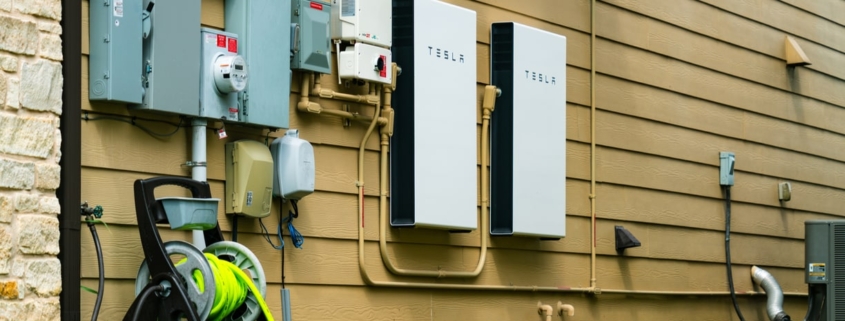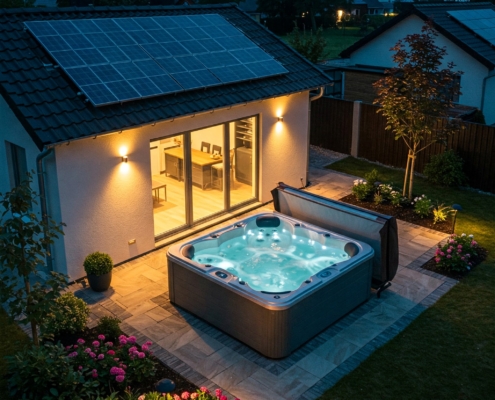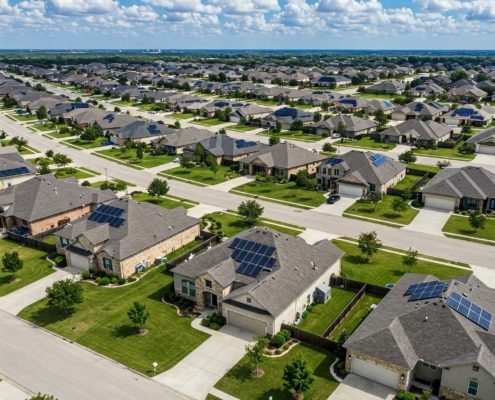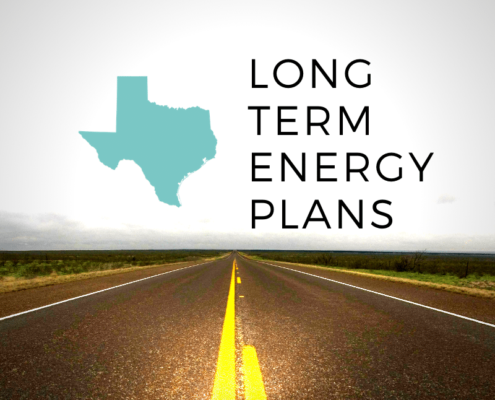Last Updated on November 30, 2022 by Mary Pressler
Tesla Home Solar Systems
How Do Tesla Solar Systems Compare To Traditional Solar Panels?
Tesla has a unique ability to get media attention and cause hype around its products. This is not only true for their electric vehicles, but also their solar roof shingles and Powerwall.
- Unlike a traditional solar panel system, the Tesla solar roof has photovoltaic cells built into the shingles. There are no visible panels, and many homeowners prefer this appearance.
- There are many home batteries in the market, but the Powerwall has some of the best specifications – especially the new Tesla Powerwall+.
Considering a Tesla Solar Roof and Powerwall?
If you are trying to decide between traditional solar panels or a solar roof, each option has pros and cons. You can use home batteries in either case, which means your decision will not affect the availability of energy storage.
Read on, and we will compare both options with a simplified example. Accurate pricing is only possible with a professional assessment of your home, but the numbers below can give you a general idea of what to expect.
Daniel’s Tesla Experience
In February 2021 we experienced the big winter storm here in Austin, Texas. We completely lost natural gas (heat) for a week, and water and electricity intermittently. Because of it being 48F inside we had to abandon our home for the week since we had a newborn child.
I decided that I never wanted to experience that again so I took some steps to help avoid it in the future. We got a 12 kW solar system from Tesla and 3 Powerwall batteries. It took 4 1/2 months from contacting Tesla to installation.
Now we quite literally are a power factory of our own, and power outages are a thing of the past with our whole home backup. Since our heat is natural gas based, we now have some space heaters that our Power walls can power easily if needed.
It is now early December 2021. Since our system has been powered on at the beginning of August we have generated 8.07 MWh with our solar panels. In that same period our home has only used 6.48 MWh, and we’ve sent 1.23 MWh back to the grid which shows up as credits on our power bill. Some could say we are quite literally helping power our neighbors and getting the financial benefits and peace of mind from no more power outages.
Update from Daniel, November 30, 2022:
“I have to say that my Tesla Solar Panels and Powerwalls are performing wonderfully! In these colder months our electricity use drops dramatically as our heat comes from natural gas. With 3 Powerwalls our 4,000 SF home gets through the night and we still have 50% reserve left, which begins refilling immediately from solar when the sun comes up. The way I see it, Powerwalls are insurance against power outages. It’s especially comforting to know that a power outage won’t affect our ability to keep our home warm. Matter of fact, we don’t even use the power grid in the winter at all unless we have two or more cloudy days in a row!”
Tesla Owner Referral Program
Use Daniel’s referral code of 23839, and earn $500 towards your Tesla Solar Roof or $300 toward Solar Panels after your system is activated.
Visit the Tesla website to find out more.
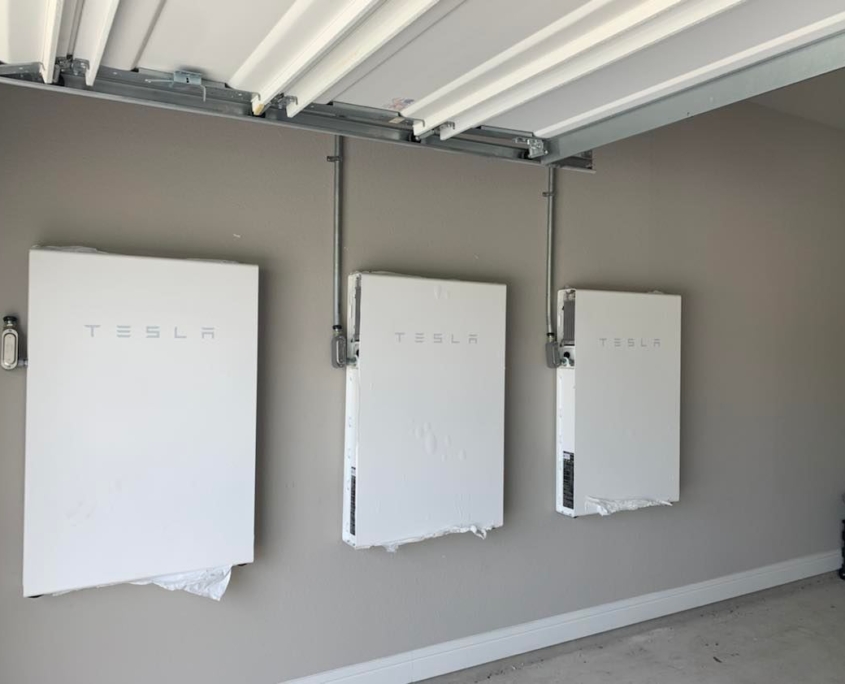
Daniel’s Power Wall System
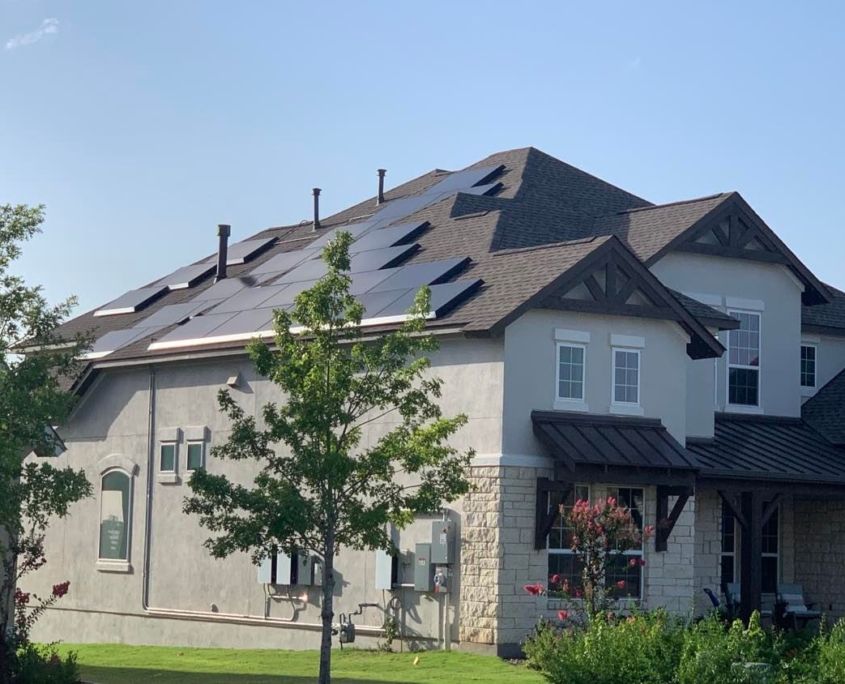
Daniel’s Tesla Solar Panels 2021
Traditional Solar Panels with an Energy Storage System
As of 2021, you can expect to pay $3,000 per kilowatt of solar panel capacity, and this includes other system components and their installation. You will pay around $15,000 for a 5-kW system, and $30,000 for a 10-kW system. If you want to enhance the system with a 10-kWh home battery, you can expect to pay around $10,000. When combining this battery with the 10-kW solar array, the total price is around $40,000.
Thanks to the two-year extension of the 26% federal tax credit, you can deduct $7,800 from the solar system and $2,600 from the battery. However, keep in mind that the battery is only eligible if you charge it EXCLUSIVELY with the solar panels, and not with electricity from the grid. The potential tax credit that can be claimed is $10,400, reducing the net cost to $29,600.
In April 2021, Tesla decided to bundle its products into packages, and you can no longer buy them separately.
- This means you can buy a Tesla solar roof + Powerwall for your home, or their normal solar panels + Powerwall. Unfortunately, Powerwalls can no longer be purchased alone.
- If you already have solar panels installed, your only option is purchasing a battery from another brand.
- However, this is not a problem because there are excellent alternatives, such as the 9.3-kWh LG Chem RESU and the 10-kWh sonnenCore.
Using a Tesla Solar Roof and Powerwall
Since solar shingles also act as a roof, they are more expensive than solar panels. Unless your home has a very simple roof design, you can expect to pay over $6,000 per kilowatt of capacity.
- Economically, this can make sense if you’re building a new home, or replacing a damaged roof – there are cases where you have to pay for a new roof anyway.
- On the other hand, if you want to maximize your ROI and have no plans to change your roof, traditional solar panels make more sense financially.
Assuming a price of $6,000 per kW, a 10-kW Tesla solar roof would cost you around $60,000. Add the $10,500 Powerwall, and the total project cost increased to $70,500. Compared with the previous example, this project is 76% more expensive while having the same capacity.
Tesla offers a discount for buying multiple Power walls, which is useful in larger homes with a higher project budget. A single unit costs $10,500, but the unit price decreases if you buy more:
- 2 Powerwalls for $17,000 ($8,500 each)
- 3 Powerwalls for $23,500 ($7,833 each)
- 4 Powerwalls for $30,000 ($7,500 each)
A Tesla solar roof also gets the 26% federal tax credit, but you cannot deduct it from the whole price. Since you’re paying for a new roof, you can only consider solar generation components when deducting the tax credit. The exact calculation depends on your roof design, but the tax credit will be comparable to that of a traditional solar panel system with similar capacity.
Instead of getting a $15,600 tax credit (26% of $60,000), the value will be closer to the $7,800 we estimated in the previous example. The Powerwall can get the full 26% ($2,730), as long as it charges only with the solar roof and not with the grid. With these assumptions, the tax credit is roughly $10,530 and the net cost is $59,970.
How Is the Powerwall+ Better Than the Normal Powerwall?
The Tesla Powerwall and Powerwall+ both have a usable storage capacity of 13.5 kW, a round-trip efficiency of 90%, and 100% depth of discharge. However, the Powerwall+ has a higher power rating, which means it can supply electricity to more devices at once:
| Power Output | Powerwall | Powerwall+ |
| Continuous Power | 5 kW | On-Grid: 7.6 kW with peak sun, 5.8 kW without sun
Off-Grid: 9.6 kW with peak sun, 7 kW without sun |
| Peak Power | 7 kW | Off-Grid: 22 kW with peak sun, 10 kW without sun |
The Powerwall+ has a built-in inverter, while the normal Powerwall needs an external one. The additional features of the Powerwall+ also make it heavier and slightly larger – the Powerwall+ has a weight of 343.9 lb, while the normal Powerwall weighs 251.3 lb. Both Powerwall types are smart devices, which means they can optimize their charging and energy supply to maximize your power bill savings.
Final Thoughts
The Tesla solar roof is an alternative to conventional solar panel installations, combining the photovoltaic cells and roof shingles into a single product. If you have no plans to replace your roof and want to maximize your financial returns, the best option is using normal solar panels.
On the other hand, if you need a new roof for a new construction or major renovation, the Tesla solar roof combines two installations in one. However, you should still get quotes for both options to make the best decision.
The Tesla Powerwall is one of the best home batteries available, but starting from April 2021 you can only purchase it in a bundle with a Tesla solar roof or conventional solar panels. If you want to add a battery to an existing solar installation, you can consider other leading battery brands like LG or Sonnen.
Learn more at Tesla USA.

